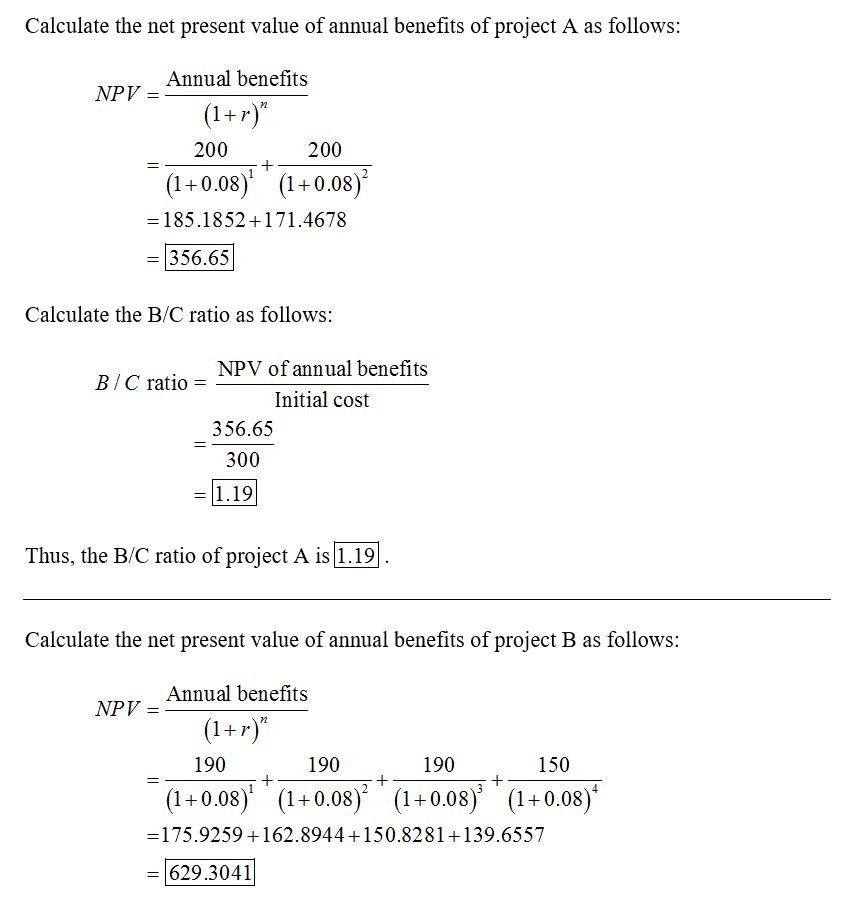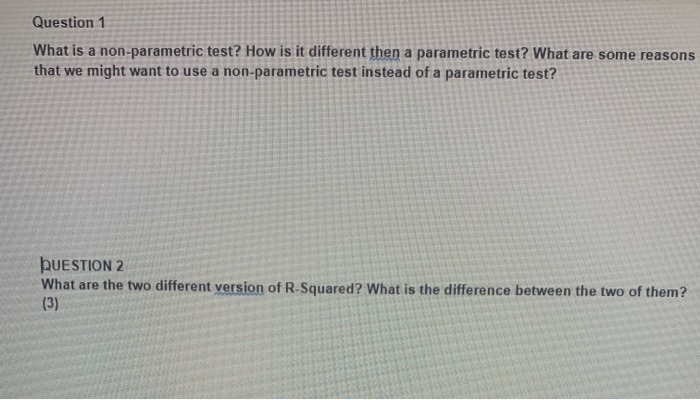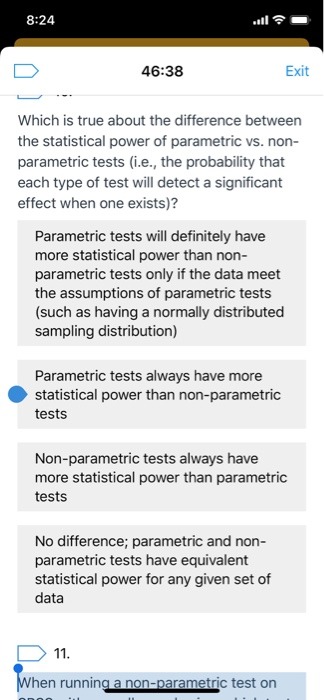



bivariate normal distribution
Calculate the B/C ratio as follows: B / C ratio = NPV of annual benefits Initial cost 629.3041 450 1.40 Thus, the B/C ratio of project B is 1.40]. Calculate the net present value of annual benefits of project C as follows: NPV = Annual benefits (1+r)" 300 300 300 300 + (1+ 0.08) (1+0.08) (1+0.08) (1+0.08) -277.7778+257.2016+ 238.1497 + 220.509 - 993.64 Calculate the B/C ratio as follows: B / C ratio = NPV of annual benefits Initial cost 993.64 765 = 1.30 Thus, the B/C ratio of project C is 1.30. The project with the highest B/C ratio is recommended. Thus, Project B is preferred.Calculate the net present value of annual benefits of project A as follows: NPV = Annual benefits (1+r)' 200 200 (1+ 0.08) (1+ 0.08) =185.1852+171.4678 356.65 Calculate the B/C ratio as follows: B / C ratio = NPV of annual benefits Initial cost 356.65 300 = 1.19 Thus, the B/C ratio of project A is 1.19. Calculate the net present value of annual benefits of project B as follows: NPV = Annual benefits (1 +r)" 190 190 190 150 + (1+ 0.08) (1+0.08) (1+0.08) (1+ 0.08) =175.9259 +162.8944+150.8281 +139.6557 629.3041Question 1 What is a non-parametric test? How is it different then a parametric test? What are some reasons that we might want to use a non-parametric test instead of a parametric test? QUESTION 2 What are the two different version of R-Squared? What is the difference between the two of them? (3)Question 1 What is a non-parametric test? How is it different then a parametric test? What are some reasons that we might want to use a non-parametric test instead of a parametric test? QUESTION 2 What are the two different version of R-Squared? What is the difference between the two of them? (3)8:24 46:38 Exit Which is true about the difference between the statistical power of parametric vs. non- parametric tests (i.e., the probability that each type of test will detect a significant effect when one exists)? Parametric tests will definitely have more statistical power than non- parametric tests only if the data meet the assumptions of parametric tests (such as having a normally distributed sampling distribution) Parametric tests always have more statistical power than non-parametric tests Non-parametric tests always have more statistical power than parametric tests No difference; parametric and non- parametric tests have equivalent statistical power for any given set of data 11. When running a non-parametric test on8:24 46:38 Exit Which is true about the difference between the statistical power of parametric vs. non- parametric tests (i.e., the probability that each type of test will detect a significant effect when one exists)? Parametric tests will definitely have more statistical power than non- parametric tests only if the data meet the assumptions of parametric tests (such as having a normally distributed sampling distribution) Parametric tests always have more statistical power than non-parametric tests Non-parametric tests always have more statistical power than parametric tests No difference; parametric and non- parametric tests have equivalent statistical power for any given set of data 11. When running a non-parametric test on2. Consider X is a bivariate normal distribution N(u.>) with u' = (1,3) and 2 I = 2 2 a. Write out the bivariate normal density of X. b. Determine the distribution X1 + 2 X2 c. Determine principal components Y1 and Y2, and calculate proportions of total variance explained by Y1 and Y2. d. Determine and accurately sketch the constant density contours that contain 50% (90%) of probability of the distribution X.2. Consider X is a bivariate normal distribution N(u.>) with u' = (1,3) and 2 I = 2 2 a. Write out the bivariate normal density of X. b. Determine the distribution X1 + 2 X2 c. Determine principal components Y1 and Y2, and calculate proportions of total variance explained by Y1 and Y2. d. Determine and accurately sketch the constant density contours that contain 50% (90%) of probability of the distribution X















